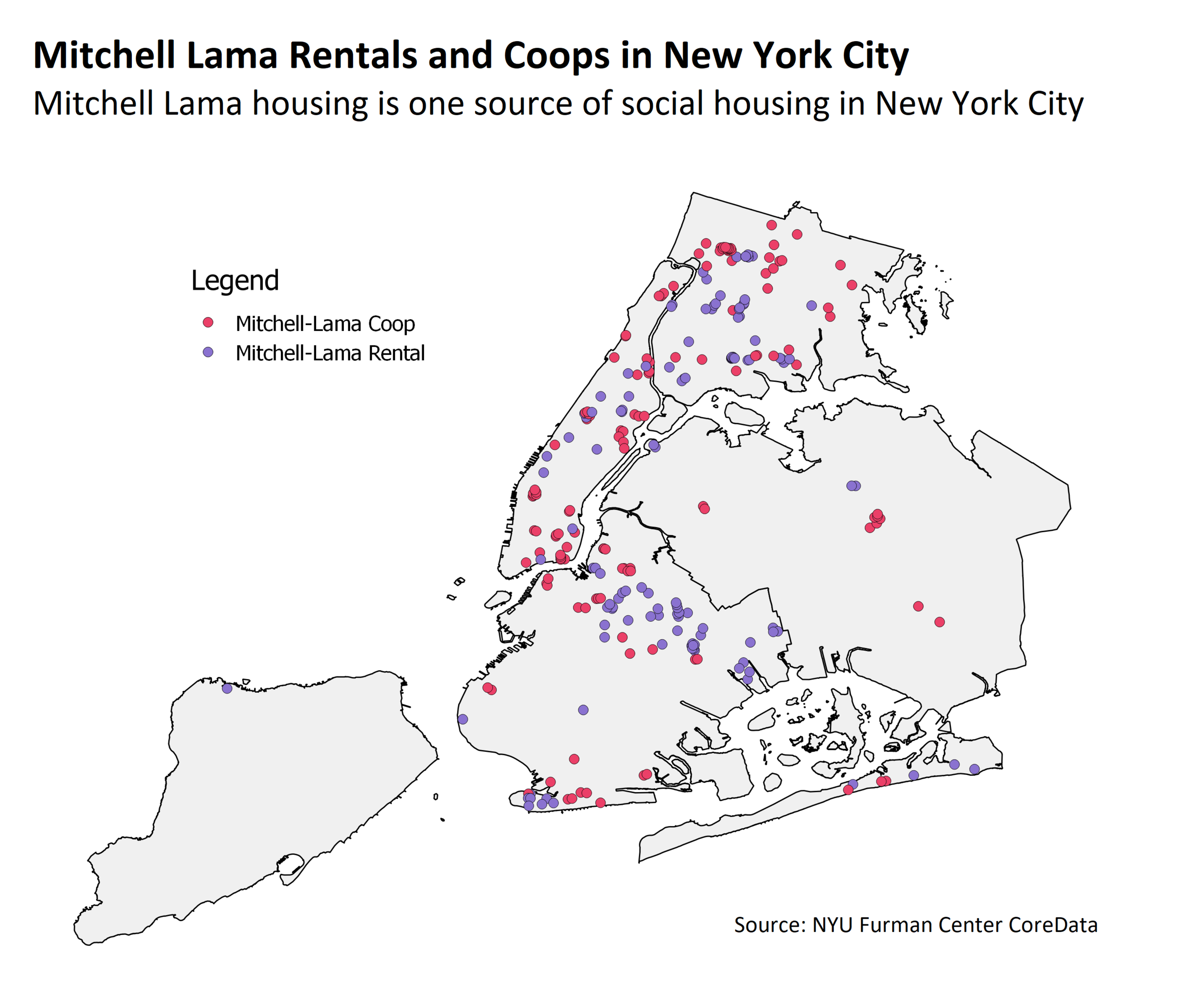New Yorkers are struggling to pay rent and mortgages, and tens of thousands are doubling up with family, living in shelters or on the street. The for-profit, private-sector model for addressing our housing challenges, utilized by the Giuliani, Bloomberg, and de Blasio Administrations, has done too little for those who need it the most and, in too many cases, accelerated gentrification and displacement. The relatively small stock of limited equity or rent-regulated housing in the city, which long provided a more affordable option, has been steadily shrinking as time-limited affordability restrictions expire and developers seek to deregulate units.
The pandemic has now deepened the crises of affordability and homelessness facing tenants and homeowners alike. New York City has a choice now: to allow the cycle of disinvestment, privatization, and displacement to accelerate or to invest in permanently affordable housing that will provide stability for tens of thousands of families in the coming years.
We will need many tools to prevent a massive wave of evictions in the wake of COVID-19, stave off a private equity feeding frenzy like what followed the 2008 mortgage crisis, and confront our city’s long-term affordable housing and homelessness crises. Rent relief for tenants and small landlords, good cause eviction protections, investment in NYCHA, and citywide comprehensive planning that makes sure all communities have a voice and combats decades of racist housing policies are all pieces of the solution.
But to truly confront the scale of New York City’s affordability and homelessness crises, we also need a bold new vision for developing affordable and supportive housing that guarantees permanent affordability, prioritizes community ownership and democratic control, and permanently insulates units from the speculative real estate marketplace.
Building on New York City’s robust history of non-profit, limited and shared-equity cooperative and rental housing, Brad’s plan utilizes existing and new tools to create and preserve social housing at a range of affordability levels, with the goal of doubling the citywide footprint of housing that will remain permanently insulated from the speculation of the real estate market.
Social housing is scattered throughout New York City; but it has been decades since any level of government has substantially invested in preserving existing units or expanding the model to serve more families. Instead, the city has increasingly relied on the private market to supply the vast majority of our housing stock, and is currently failing to provide enough quality, affordable, and accessible homes to New Yorkers. Investing in and expanding social housing will create that homes poor and working-class families can actually afford, while setting a floor for quality and a ceiling on price in the private real estate market.
Brad’s plan:
Create 150,000+ new social housing units through strategies that maximize public land and resources for non-profit, community controlled, or publicly-owned housing.
Create a NYC Land Bank to Acquire Distressed Assets.
Require all Housing Developed on City-Owned Land to be Social Housing.
Expand NYC’s Neighborhood Pillars Program.
Restore the Balance of City Subsidy Dollars for Affordable Housing, So That Half Goes To Social Housing.
Transfer Future Affordable Units Created through Inclusionary Zoning to Social Ownership.
Replace the Tax Lien Sale with a Social Housing Approach.
Establish a New, Citywide, “Shared Equity Homeownership” Program.
Preserve permanent affordability in all existing social housing units by investing in Mitchell-Lama cooperatives, HFDCs, Non-Profit Community Development Corporations, and NYCHA.
Preserve All 65,000 Existing Mitchell-Lama Cooperatives as Permanently Affordable Homeownership for Present AND Future New Yorkers.
Ensure the Long-Term/Permanent Affordability of HDFC Cooperatives.
Support Nonprofit Community Development Corporations (CDCs) and Supportive Housing Groups, and Expand Models Like JOE NYC.
Restore and Preserve the New York City Housing Authority (NYCHA) So It Can Provide High-Quality, Permanently Affordable Housing.
Brad’s social housing plan builds on the city’s existing commitment to affordable housing with additional city capital commitments that align with the $2.5 billion annual increase proposed by the broad United for Housing coalition. As Brad’s research has demonstrated, the city has room to increase capital spending while still keeping debt service at reasonable levels. With interest rates at historic lows and economic stimulus benefits from construction, long-term borrowing for permanently affordable, supportive, social housing is a smart investment in our city’s future.
This plan is both ambitious and achievable. It requires a shift in focus away from the for-profit, private sector model that the de Blasio administration has relied on to provide below market housing, towards a model that invests in public, non-profit, and community-centered strategies that will curb prices around the city and create long-term affordability for New York families. By treating housing as a public good rather than a vehicle for profit, we can ensure that all New Yorkers have a home they can afford. This plan is a concrete step towards that possible future.




